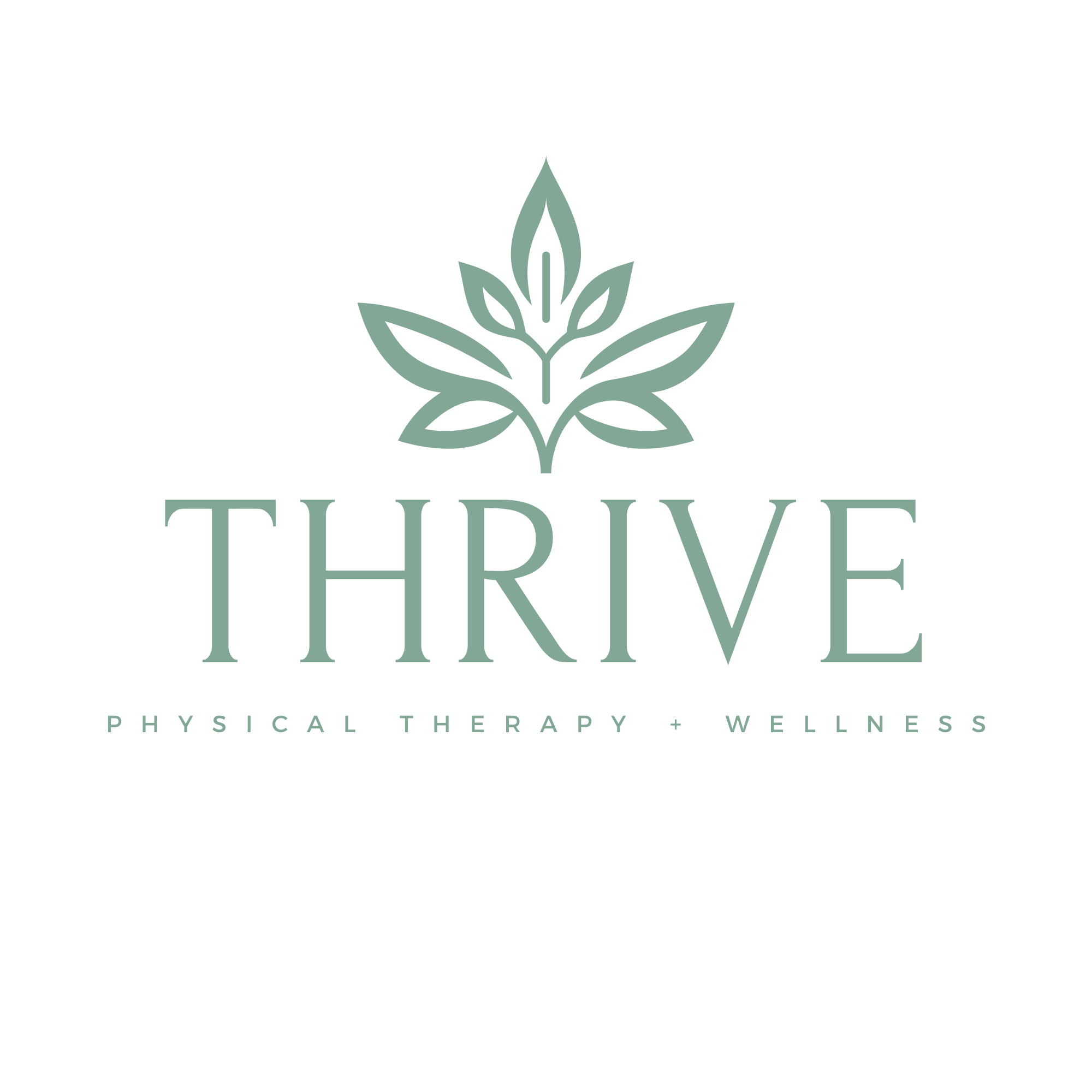
You’ve just been through surgery—whether it was to repair a torn ligament, replace a worn-out joint, or fix something deeper and more complex. The hardest part should be over, right? Not quite. Because now comes the part that’s just as vital as the surgery itself: recovery. And physical therapy isn’t just a gentle suggestion during this stage—it’s your golden ticket to regaining strength, movement, and control. It’s not about bouncing back overnight; it’s about rebuilding with intention.
If you’ve ever wondered why your surgeon or doctor insists on post-surgery physical therapy, it’s not because they want to fill your calendar. It’s because they know, as do the expert therapists at Thrive Physical Therapy, that recovery without guided movement is like trying to drive a car without gas. You need it to go anywhere.
The Healing Window: Why Time Matters
The body is smart. After surgery, it leaps into action, flooding the affected area with blood cells, nutrients, and a complex array of healing agents. But here’s the thing: it’s not perfect. Scar tissue can form in ways that limit mobility. Muscles, when left inactive, quickly weaken. Joints stiffen. And the longer you go without movement, the more your body settles into this limited state.
That’s where post-surgical physical therapy steps in—not just to get you moving but to guide the healing process so that your body heals right. There’s a window of time after surgery where your tissues are especially responsive to rebuilding, retraining, and restoring function. Miss that window, and you may recover, sure—but not to your full potential.
Thrive Physical Therapy understands this timing intimately. Their therapists work in sync with your medical timeline, ensuring that every stretch, every step, every controlled motion is done not just safely but strategically.
More Than Just Movement: The Science Behind the Sessions
Let’s be honest—when most people picture physical therapy, they imagine sterile rooms, resistance bands, and a therapist asking if it hurts yet. But what’s happening under the surface is far more sophisticated.
Post-surgical therapy is part art, part science. It’s about retraining neuromuscular pathways that have gone dormant. It’s about reawakening proprioception—your brain’s awareness of where your limbs are in space—so you don’t just walk again, you walk with confidence. It’s about ensuring proper blood flow to healing tissues without stressing the surgical site.
Thrive Physical Therapy excels in this multi-layered approach. Their sessions aren’t one-size-fits-all. Instead, they’re tailored to the individual—your goals, your surgery, your comfort level. They combine evidence-based practices with personalized care, so every movement you make in therapy pushes you closer to real-world strength and stability.
Battling Pain the Right Way
Pain after surgery can be overwhelming. And while medications can dull it, they don’t address the root of it. Physical therapy helps. Not by masking the pain, but by understanding it—studying how it moves, when it spikes, and what calms it.
With the right therapy plan, many patients find they rely less on pain meds and more on movement itself to find relief. That’s because physical therapy promotes endorphin release (your body’s natural painkillers), improves circulation, and helps flush out inflammatory toxins.
At Thrive, therapists don’t push through pain; they listen to it. They educate patients on what kind of pain is normal, what’s a warning sign, and how to move smarter. Their compassionate approach transforms pain from an enemy into a guide.
Preventing the Setbacks You Didn’t See Coming
Here’s a truth that surprises a lot of post-surgery patients: complications don’t always come from the surgery itself. They come from what happens after. Blood clots, infections, poor scar mobility, compensatory injuries—many of these risks spike when patients are sedentary for too long or try to return to normal life too fast.
Physical therapy creates a protective buffer against these issues. By getting you moving in safe, controlled ways, therapists help stimulate healthy circulation, improve lung function (especially important after major surgeries), and ensure your body mechanics stay aligned.
Thrive Physical Therapy therapists are trained to recognize early warning signs of trouble and pivot your treatment plan as needed. They don’t just focus on the surgical site—they look at your body holistically. Are your shoulders overcompensating for your repaired knee? Are you favoring one side of your body and creating future imbalances? They see the patterns before you feel them, and they correct them before they become problems.
Rebuilding Confidence—Inside and Out
Let’s not overlook the emotional side of recovery. Surgery, no matter how “routine,” takes a toll. It’s normal to feel fragile, even vulnerable, afterward. Your body feels unfamiliar. Movements you once took for granted—climbing stairs, lifting groceries, even sleeping comfortably—suddenly feel like obstacles.
Physical therapy doesn’t just rebuild muscle and mobility. It rebuilds you. It reminds you of what your body can do, step by step. It helps you trust your limbs again. There’s nothing quite like that moment when a patient realizes, “Hey—I just did that on my own.”
Thrive Physical Therapy celebrates these milestones. They know that progress isn’t just measured in inches of knee bend or degrees of shoulder rotation. It’s in the smile after your first independent walk around the block. It’s in the posture you regain, both physically and emotionally.

The Long Game: Why PT Doesn’t End with Discharge
Many patients fall into the trap of thinking that once they’re out of the hospital or cleared by their surgeon, they’re done. Not so. Post-surgery recovery isn’t a sprint—it’s more of a winding trail through the woods, with some steep climbs and hidden turns.
Ongoing physical therapy ensures you stay on that path and avoid detours that lead to setbacks. It fine-tunes your strength, improves balance, and reinforces proper mechanics, especially as you return to daily activities or sports. It’s about making sure the recovery sticks.
At Thrive, the journey doesn’t end with your last appointment. They equip patients with home exercises, advice for workplace ergonomics, tips for resuming favorite activities—all to ensure that once you’re back to living your life, you’re doing it with strength and confidence.
Personalized Care That Goes Beyond the Clipboard
What sets Thrive Physical Therapy apart is that they never treat patients like case numbers or checkboxes. From the first consultation, you’re met with listening ears and attentive minds. They ask about you—not just your injury. Your goals, your fears, your lifestyle.
This personalized care translates into treatment that fits you like a glove. Maybe you’re an athlete eager to get back on the field, or a parent just wanting to lift their toddler without wincing. Maybe your goal is as humble as walking pain-free to the mailbox. Whatever your vision of recovery is, Thrive builds your plan around it.
They also take the time to explain the “why” behind every movement and every stretch. When you understand what’s happening in your body—and why that awkward-looking band exercise matters—you’re more likely to commit to the process. And that commitment? That’s where real healing begins.
Why Waiting to Start PT Can Set You Back
There’s a common delay many patients make after surgery: they wait. Sometimes it’s because of fear—worried that moving too soon might damage something. Other times it’s because no one made it clear just how important PT is. But here’s the truth—waiting too long can set your recovery back more than you think.
The body starts adapting to inactivity astonishingly fast. Within days, muscles begin to weaken. Within weeks, range of motion decreases. That’s why many surgical protocols now recommend starting gentle therapy almost immediately, sometimes even within 24 to 48 hours post-op.
Thrive’s team knows how to start therapy at just the right pace. They understand surgical protocols, but more importantly, they understand people. They help you work through your fear, your discomfort, and yes, even your frustration—without pushing you beyond what’s safe.
The Thrive Difference: Real People, Real Results
There’s a certain vibe when you walk into Thrive Physical Therapy. It’s not the smell of antiseptic or the sterile feel of a hospital wing. It’s warm. Uplifting. Even inspiring. The therapists greet you by name. They remember what you talked about last session. They root for your progress as if it were their own.
Recovery, after all, isn’t just a medical process—it’s a human one. And Thrive gets that. Their focus isn’t just on healing your injury, but on helping you feel whole again.
This is physical therapy the way it should be: empowering, compassionate, evidence-based, and deeply human. Whether you’re just beginning your recovery or you’ve been stuck in a frustrating plateau, Thrive meets you where you are—and helps you move forward with clarity and confidence.
Suggested Reading: How Physical Therapy Helps Slow the Progression of Osteoarthritis
Conclusion: Healing Begins with Movement—and the Right Support
Surgery may fix what was broken, but it’s physical therapy that truly puts the pieces back together. It turns stiffness into strength, pain into progress, and hesitation into confidence. Skipping or underestimating this step can leave you halfway up the mountain with no clear way forward.
If you or someone you love is facing surgery—or already navigating recovery—know this: you don’t have to go it alone. With the right guidance, recovery becomes less about surviving and more about thriving.
And when it comes to finding that guidance, Thrive Physical Therapy is more than just a clinic—it’s a partner in your journey. Their expert therapists blend science, empathy, and unwavering support to ensure you heal not just quickly, but completely. Because every step matters. And they’re right there with you, every step of the way.

